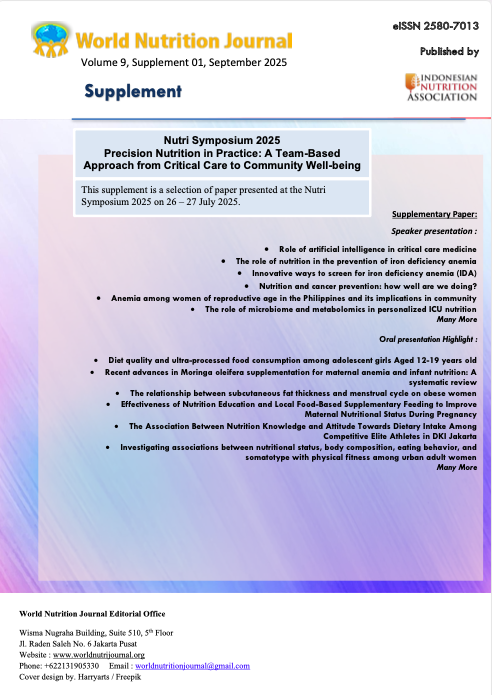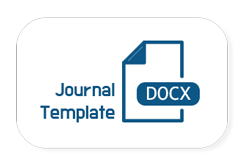Advancing child health through safe hydration
Keywords:
children, safe drinking water, health
Abstract
Diarrhea is One in five children in Indonesia does not drink enough water, but that’s not the only problem regarding child health and water consumption. The prevalence of Diarrhea in Indonesian children is one in four children under 5 years old. The high prevalence is closely linked to poor sanitation and unsafe drinking water. Water comprises 75% body weight in infants to 55% in the elderly, and plays very crucial role in cellular hemostasis and life. Therefore, the optimal functioning of our body requires a good hydration level from safe drinking water.Downloads
Download data is not yet available.
References
1. Laksmi PW, et al. Dietary pattern and its association with stunting in children. Eur J Nutr. 2018.
2. UNICEF Indonesia. Water, sanitation and hygiene [Internet]. [cited 2025 Sep 17]. Available from: https://www.unicef.org/indonesia/water-sanitation-and-hygiene
3. Ratnayani, et al. Drinking water source and gut microbiota composition in stunted children living in Jakarta slum areas, isn’t related? Int J Innov Res Sci Stud. 2025;8(2).
4. Kementerian Kesehatan Republik Indonesia. Profil Kesehatan Indonesia 2021. Jakarta: Kemenkes RI; 2022.
5. Firmansyah RRT, Murti B, Prasetya H. A meta-analysis of correlation between diarrhea and stunting
in children under five. J Epidemiol Public Health. 2023;8(1):88–97. doi:10.26911/jepublichealth.2023.08.01.08
6. Badan Penelitian dan Pengembangan Kesehatan. Laporan hasil penelitian studi kualitas air minum rumah tangga (SKAMRT) di Indonesia. Jakarta: Badan Litbangkes; 2020.
7. Kementerian Kesehatan Republik Indonesia. Peraturan Menteri Kesehatan Republik Indonesia Nomor 492/MENKES/PER/IV/2010 tentang Persyaratan Kualitas Air Minum. Jakarta: Kemenkes RI; 2010.
8. World Health Organization. Guidelines for drinking-water quality. 4th ed. Geneva: WHO; 2011.
2. UNICEF Indonesia. Water, sanitation and hygiene [Internet]. [cited 2025 Sep 17]. Available from: https://www.unicef.org/indonesia/water-sanitation-and-hygiene
3. Ratnayani, et al. Drinking water source and gut microbiota composition in stunted children living in Jakarta slum areas, isn’t related? Int J Innov Res Sci Stud. 2025;8(2).
4. Kementerian Kesehatan Republik Indonesia. Profil Kesehatan Indonesia 2021. Jakarta: Kemenkes RI; 2022.
5. Firmansyah RRT, Murti B, Prasetya H. A meta-analysis of correlation between diarrhea and stunting
in children under five. J Epidemiol Public Health. 2023;8(1):88–97. doi:10.26911/jepublichealth.2023.08.01.08
6. Badan Penelitian dan Pengembangan Kesehatan. Laporan hasil penelitian studi kualitas air minum rumah tangga (SKAMRT) di Indonesia. Jakarta: Badan Litbangkes; 2020.
7. Kementerian Kesehatan Republik Indonesia. Peraturan Menteri Kesehatan Republik Indonesia Nomor 492/MENKES/PER/IV/2010 tentang Persyaratan Kualitas Air Minum. Jakarta: Kemenkes RI; 2010.
8. World Health Organization. Guidelines for drinking-water quality. 4th ed. Geneva: WHO; 2011.
Submitted
2025-09-19
Published
2025-09-29
Section
Articles
Copyright (c) 2025 Diana Sunardi

This work is licensed under a Creative Commons Attribution 4.0 International License.
World Nutrition Journal provides immediate open access to its content under the Creative Commons Attribution License (CC BY 4.0). This permits unrestricted use, distribution, and reproduction in any medium, provided the original work is properly cited.













